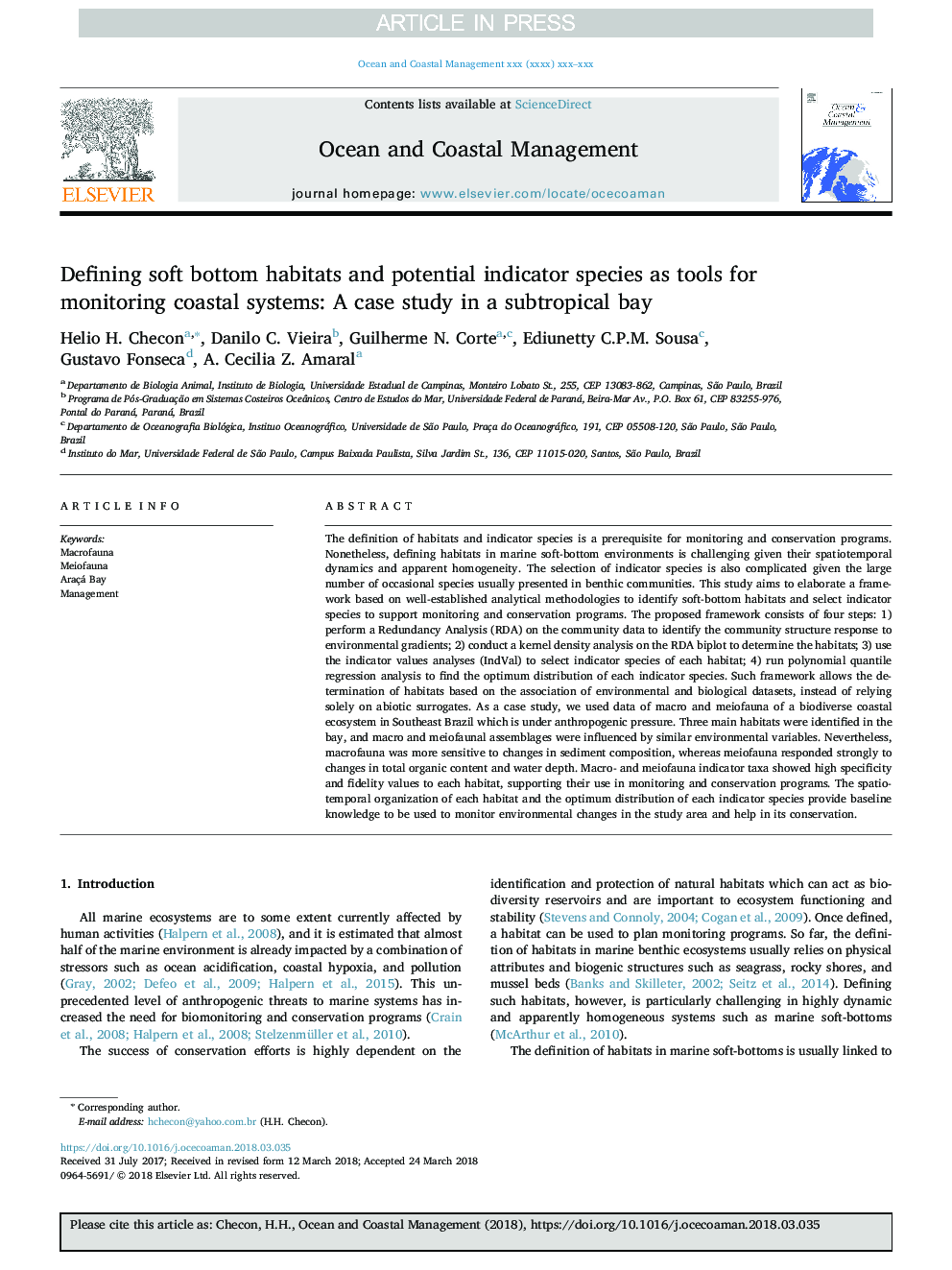| کد مقاله | کد نشریه | سال انتشار | مقاله انگلیسی | نسخه تمام متن |
|---|---|---|---|---|
| 11015652 | 1782045 | 2018 | 11 صفحه PDF | دانلود رایگان |
عنوان انگلیسی مقاله ISI
Defining soft bottom habitats and potential indicator species as tools for monitoring coastal systems: A case study in a subtropical bay
ترجمه فارسی عنوان
تعریف زیستگاه های پایینی نرم و گونه های شاخص بالقوه به عنوان ابزار برای نظارت بر سیستم های ساحلی: یک مطالعه موردی در خلیج ساتروپیک
دانلود مقاله + سفارش ترجمه
دانلود مقاله ISI انگلیسی
رایگان برای ایرانیان
کلمات کلیدی
موضوعات مرتبط
مهندسی و علوم پایه
علوم زمین و سیارات
اقیانوس شناسی
چکیده انگلیسی
The definition of habitats and indicator species is a prerequisite for monitoring and conservation programs. Nonetheless, defining habitats in marine soft-bottom environments is challenging given their spatiotemporal dynamics and apparent homogeneity. The selection of indicator species is also complicated given the large number of occasional species usually presented in benthic communities. This study aims to elaborate a framework based on well-established analytical methodologies to identify soft-bottom habitats and select indicator species to support monitoring and conservation programs. The proposed framework consists of four steps: 1) perform a Redundancy Analysis (RDA) on the community data to identify the community structure response to environmental gradients; 2) conduct a kernel density analysis on the RDA biplot to determine the habitats; 3) use the indicator values analyses (IndVal) to select indicator species of each habitat; 4) run polynomial quantile regression analysis to find the optimum distribution of each indicator species. Such framework allows the determination of habitats based on the association of environmental and biological datasets, instead of relying solely on abiotic surrogates. As a case study, we used data of macro and meiofauna of a biodiverse coastal ecosystem in Southeast Brazil which is under anthropogenic pressure. Three main habitats were identified in the bay, and macro and meiofaunal assemblages were influenced by similar environmental variables. Nevertheless, macrofauna was more sensitive to changes in sediment composition, whereas meiofauna responded strongly to changes in total organic content and water depth. Macro- and meiofauna indicator taxa showed high specificity and fidelity values to each habitat, supporting their use in monitoring and conservation programs. The spatio-temporal organization of each habitat and the optimum distribution of each indicator species provide baseline knowledge to be used to monitor environmental changes in the study area and help in its conservation.
ناشر
Database: Elsevier - ScienceDirect (ساینس دایرکت)
Journal: Ocean & Coastal Management - Volume 164, 1 October 2018, Pages 68-78
Journal: Ocean & Coastal Management - Volume 164, 1 October 2018, Pages 68-78
نویسندگان
Helio H. Checon, Danilo C. Vieira, Guilherme N. Corte, Ediunetty C.P.M. Sousa, Gustavo Fonseca, A. Cecilia Z. Amaral,
